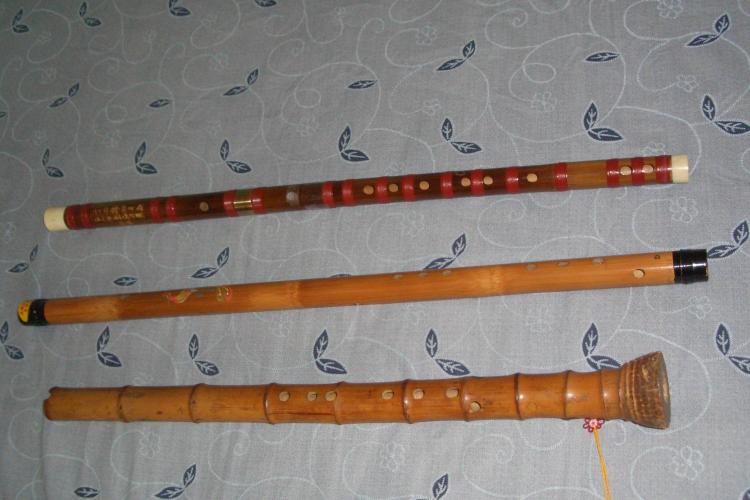Often carved from wood, bamboo, or bone, flutes are among the oldest instruments known to man.
Recognized for its exotic sound, the dizi, better known to the West as the Chinese bamboo flute, is the smaller sister of the xiao.
Many legends tell of the origins of the dizi. Some say it was the Yellow Emperor Huang Di, the first emperor of China, who gave the order to create the instrument. Some say it was introduced during the Han Dynasty (206 B.C.-A.D. 220) from somewhere west of China by Emperor Wudi’s messenger, Zhang Qian, in 119 B.C.
Han Xiang, a legendary cultivator of the Dao who lived in the Tang dynasty is often depicted with a flute. He is venerated as one of the popular Chinese saints, or “Eight Immortals,” and became the protector of flautists. Han Xiang learned from Chen Xian (another of the Eight Immortals) how to play the dizi. Through divine powers that unfolded from the music, he brought a dead prince back to life and made sick people healthy. Legend also has it that the phoenix and other birds would dance when he played his jade dizi.
The oldest flutes that have been found in China were discovered in the 9,000-year-old village of Jiahu in the Central Yellow River Valley of China. The flutes are carved of bone and closely resemble those of modern times. Some can still make music. The form of the dizi, which is played today, has remained largely the same since the Yuan dynasty (1279-1368). As bamboo is a common material in China, there was nothing cheaper or easier to obtain than a bamboo flute. Its practical material made it easy to transport as well.
The dizi has one blowhole, six finger holes, two pairs of holes in the end for tuning where decorative tassels are often hung, and one membrane hole called the Mo-Cong, which is unique to the dizi. The holes of the flute were once equally distanced from each other, and the scale of the dizi consisted of whole-tone and three-quarter-tone intervals. Yet in the middle of the 20th century, flute makers changed the holes to enable playing in equal temperament, and adjusted the dizi to the Western scale.
Each dizi can be played in three different keys and has a tone range of two octaves with an additional two to three tones. For this reason, professional players will often use a set of several flutes to cover all the keys needed in modern performance.
As a technical improvement, the Mo-Cong was invented in the Tang dynasty (618-907) by Liu Xi. He found that the sound gets stronger and more appealing when the sound hole is covered with a thin membrane. This thin film called dimo is made from the inner layer of a bamboo reed tube. The film is gently wrapped around the flute and fixed with a traditional kind of glue, called Ejiao, made from donkey rawhide. Garlic juice has also been used as a type of glue. As these natural glues are water soluble, the musician can remove and adjust the dimo to fine tune the sound of his instrument according to the mood of his melody. When the flute is blown, the slightly wrinkled membrane resonates and adds the characteristic buzzing quality that makes the bamboo flute charming.
Two different varieties of dizi developed, which were traditionally played with two different opera styles: The Bon Zi Opera was popular in north China and the special flute for it became the Bon Di, a short flute with higher tone range and penetrative sound. The southern opera style was the Qun Opera, and the flute made for it was the Qun Di. This flute is longer and has a lower and more mellow tone.





